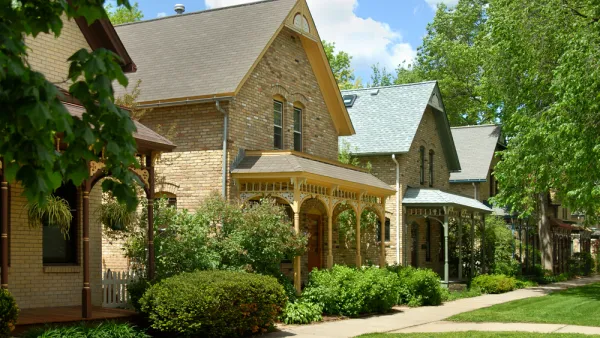The demographic milestone shows how the U.S. is quickly becoming a nation of minorities - and also shows the rapid aging and lower birth rates of the white, non-hispanic demographic. However, due to immigration, the total white population increased.
Greg Toppo and Paul Overberg report on the new U.S. Census Bureau estimates for 2012 released June 13. The development had been expected to occur at the end of the decade.
Between July 2011 and July 2012, an estimated 12,400 more white Americans died than were born, says demographer Kenneth Johnson of the University of New Hampshire's Carsey Institute. As recently as 2010-11, white births outpaced deaths by 29,600.
While barely growing, whites make up 64% of the population and won't become a minority until 2050 if current trends continue, write Toppo and Overberg.
William Frey, a demographer at the Brookings Institution explains the connection of the shrinking non-Hispanic white population to the economy and funding of some of America's social welfare programs.
He predicts that white retirees "will be on the receiving end of an economy which will be fueled largely by the efforts of Hispanics, blacks and Asians," whose birth-to-death ratios are not headed in the same direction.
Frey states that "one of our challenges this century (will be) having a large part of the old Baby Boom understand it's the young people who are really their benefactors."
The Census also reported on the rate of growth of the country's racial and ethnic groups.
- Asian population rose 2.9% last year, much of it because of immigration, to 18.9 million
- Hispanics grew 2.2% to just over 53 million
- African Americans grew by 1.3% to 44.5 million
- Native Hawaiians and Other Pacific Islanders climbed 2.2 percent to about 1.4 million
- American Indians and Alaska Natives rose 1.5 percent to a little over 6.3 million
- Whites grew by 0.1%
The current U.S and world population can be seen on the Census Population Clock.
FULL STORY: Census: More deaths than births among whites

National Parks Layoffs Will Cause Communities to Lose Billions
Thousands of essential park workers were laid off this week, just before the busy spring break season.

Retro-silient?: America’s First “Eco-burb,” The Woodlands Turns 50
A master-planned community north of Houston offers lessons on green infrastructure and resilient design, but falls short of its founder’s lofty affordability and walkability goals.

Delivering for America Plan Will Downgrade Mail Service in at Least 49.5 Percent of Zip Codes
Republican and Democrat lawmakers criticize the plan for its disproportionate negative impact on rural communities.

Test News Post 1
This is a summary

Test News Headline 46
Test for the image on the front page.

Balancing Bombs and Butterflies: How the National Guard Protects a Rare Species
The National Guard at Fort Indiantown Gap uses GIS technology and land management strategies to balance military training with conservation efforts, ensuring the survival of the rare eastern regal fritillary butterfly.
Urban Design for Planners 1: Software Tools
This six-course series explores essential urban design concepts using open source software and equips planners with the tools they need to participate fully in the urban design process.
Planning for Universal Design
Learn the tools for implementing Universal Design in planning regulations.
EMC Planning Group, Inc.
Planetizen
Planetizen
Mpact (formerly Rail~Volution)
Great Falls Development Authority, Inc.
HUDs Office of Policy Development and Research
NYU Wagner Graduate School of Public Service



























